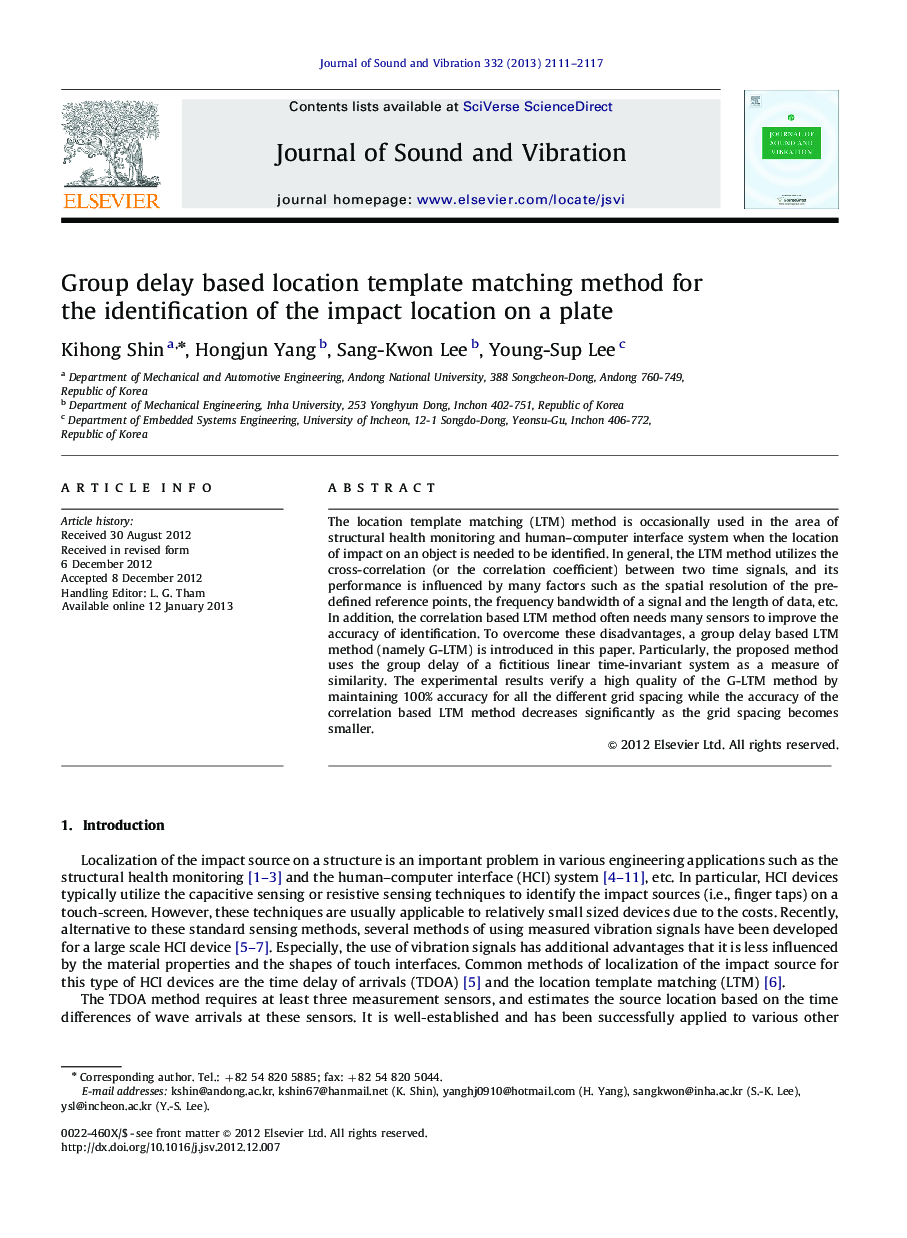| Article ID | Journal | Published Year | Pages | File Type |
|---|---|---|---|---|
| 288125 | Journal of Sound and Vibration | 2013 | 7 Pages |
The location template matching (LTM) method is occasionally used in the area of structural health monitoring and human–computer interface system when the location of impact on an object is needed to be identified. In general, the LTM method utilizes the cross-correlation (or the correlation coefficient) between two time signals, and its performance is influenced by many factors such as the spatial resolution of the pre-defined reference points, the frequency bandwidth of a signal and the length of data, etc. In addition, the correlation based LTM method often needs many sensors to improve the accuracy of identification. To overcome these disadvantages, a group delay based LTM method (namely G-LTM) is introduced in this paper. Particularly, the proposed method uses the group delay of a fictitious linear time-invariant system as a measure of similarity. The experimental results verify a high quality of the G-LTM method by maintaining 100% accuracy for all the different grid spacing while the accuracy of the correlation based LTM method decreases significantly as the grid spacing becomes smaller.
► It is aimed for a large sized human–computer interface (HCI) system. ► It deals with the problem of localization of an impact source on a plate. ► Group delay is used as a measure of similarity between two signals. ► The new method has a far better accuracy than the correlation based method.
